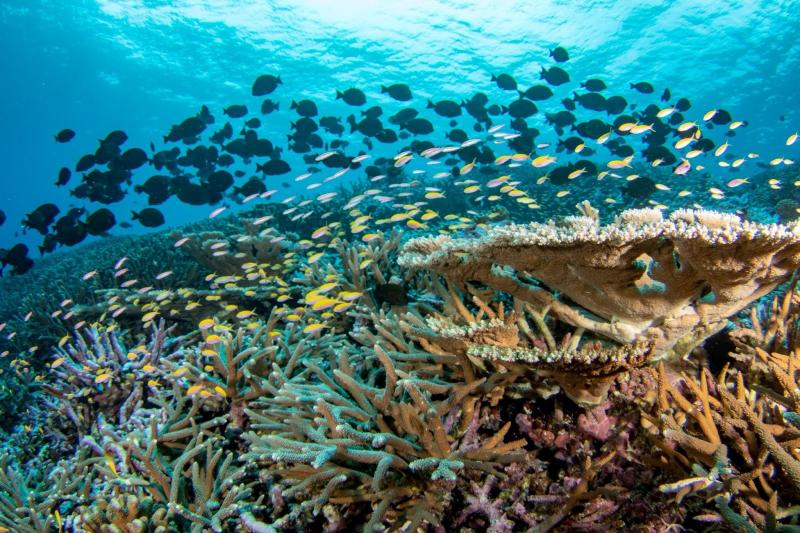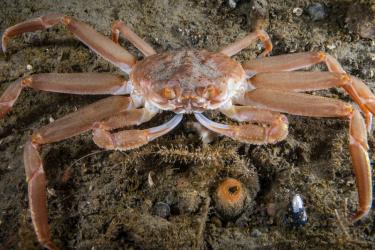Wow, what a year! Take a look at our top stories, photos, podcasts, and videos of 2023. Did yours make the list? Scroll on down to see which topics were most popular.
Top Features
Seals, sea lions, and whales, oh my: Three of our top five stories in 2023 featured these whales.
1. Is It a Seal or a Sea Lion?
The most popular story of the year is all about seals and sea lions, and the distinct characteristics that tell them apart.
Get a refresh on the differences between seals and sea lions
2. Toxic Algal Bloom Suspected in Dolphin and Sea Lion Deaths in Southern California
Second place goes to a much more serious topic: a toxic algal bloom in Southern California. In the first weeks of June 2023, there was a rapid growth of harmful algae along parts of the Southern California Coast. It was believed to have killed hundreds of California sea lions and close to 60 dolphins. Stranding Network asked beachgoers to keep a safe distance and report strandings.
Learn more about the toxic algal bloom in Southern California
3. Inbreeding Contributes to Decline of Endangered Killer Whales
Our third most popular feature focused on new science, specifically new genome sequencing that showed Southern Residents are highly inbred.
Find out how inbreeding is contributing to the decline of endangered killer whales
4.Successful Effort to Rescue an Entangled Humpback Whale in Alaska
Fourth on the list was a story on trained responders freeing a humpback whale from a life-threatening entanglement near Gustavus, Alaska.
Learn more about the successful effort to rescue an entangled humpback whale in Alaska
Whale Week: Celebrating the Wonder of Whales
Lastly, Whale Week made the top five stories of 2023. This campaign is one of our favorites of the year, highlighting NOAA's robust work studying, recovering, and conserving these magnificent marine mammals.
Discover more about Whale Week
Top Podcasts
Listen up! Check out the five most downloaded podcasts of the year, which covered topics that ran the gamut from cooperative research with sport fishers and habitat restoration and dam removals to reflecting on 50 years of the Endangered Species Act.
1. Cooperative Research: Citizens and Government Working Together to Study Fisheries
How sport fishers are improving West Coast fisheries.
2. Restoring the Klamath River Basin: The Largest Dam Removal Project in the World
How the restoration of the Klamath watershed, the largest dam removal project in the world, will reopen access to habitat for the threatened and endangered native fish of the area.
3. Shark Surveys and Lesson Plans: A Multitasking Teacher at Sea
Hear about the Teacher at Sea program from this interview with Maronda Hastie, one of our recent teachers, who went above and beyond to bring what she learned to her students.
4. The Endangered Species Act at 50
In 2023, we celebrated 50 years of the Endangered Species Act! NOAA Fisheries Assistant Administrator Janet Coit celebrated the Act and discusses why it is such a foundational law.
5. A Citizen's Guide to Fishery Management
Hear how regional fishery management councils shape the management of our nation's fisheries.
Top Photos
A picture is worth a thousand words, and our top five speak volumes.
- 1: Welcome to Whale Week
- 2: Al Roker Showcases Aquaculture as a Climate Solution during Earth Week
- 3: 2023 Ruth Gates Coral Restoration Innovation Grants
- 4: Debunking Common Shark Myths, Day 1
- 5: Debunking Common Shark Myths, Day 2
Top Videos
Watch these fan favorite videos, including special appearances from a humpback whale rescue, North Atlantic right whale migration patterns, leatherback sea turtles, an adorable beluga named Tyonek, and the filtration power of oysters!
1. “Whale” of a Rescue Effort
Watch this amazing whale rescue! When a young humpback whale was entangled near Gustavus, Alaska, a team of trained responders quickly got to work, using planes, drones, and boats to find the whale and assess its condition. The team used specialized gear—including a 25-foot-long pole with a knife attached to the end, and grappling hooks with razor-sharp knife blades inside the grapple to cut as they grab. They made several cuts in the lines entangling the whale, and it was able to swim away!
More on the whale rescue in Alaska
2. North Atlantic Right Whale Migratory Pattern
This visualization illustrates the risk whales face every day. It shows the migratory path of a 1-year-old North Atlantic right whale satellite-tagged off the Virginia/North Carolina coast in March 2021.
Learn more about North Atlantic right whales
3. Applying Satellite Tags to Leatherback Sea Turtles in Florida
Get a closer look at how NOAA scientists in the panhandle of Florida apply satellite tags to leatherback sea turtles to learn where they are and how they use the water so we can better protect them from bycatch and other threats. Sea turtles have been around for millions of years, and we want them to be around for millions more.
Learn more about tagging leatherback sea turtles in Florida
4. Tyonek the Beluga 5-Year Update
The success story behind the rehabilitation of the abandoned baby beluga rescued in 2017 involved several agencies and a 4,000-mile journey. Five years later, Tyonek is thriving! He has learned to dive, vocalize, and socialize. Scientists hope to learn a lot about this endangered species.
Learn more about Tyonek's story
5. Oyster Filtration Demonstration
Nutrients like nitrogen and phosphorus are essential to all life. When excess nutrients end up in coastal waters (from stormwater, fertilizers, and other runoff), algae and seaweed can grow out of control. This can cause environmental problems like low oxygen and algal blooms. But, oysters can help! Shellfish such as oysters and clams feed on microscopic algae in the water—a single oyster can filter up to 50 gallons of water every day. At our lab in Milford, Connecticut, we wanted to see just how well this natural filtration method worked, so we added algae to two tanks: one with oysters and one without. Watch this time lapse to see how effective they really are.
Thank You
Thank you for joining us throughout this year. We are excited to keep sharing important news and science on marine life and ocean resources in 2024—stay tuned!














